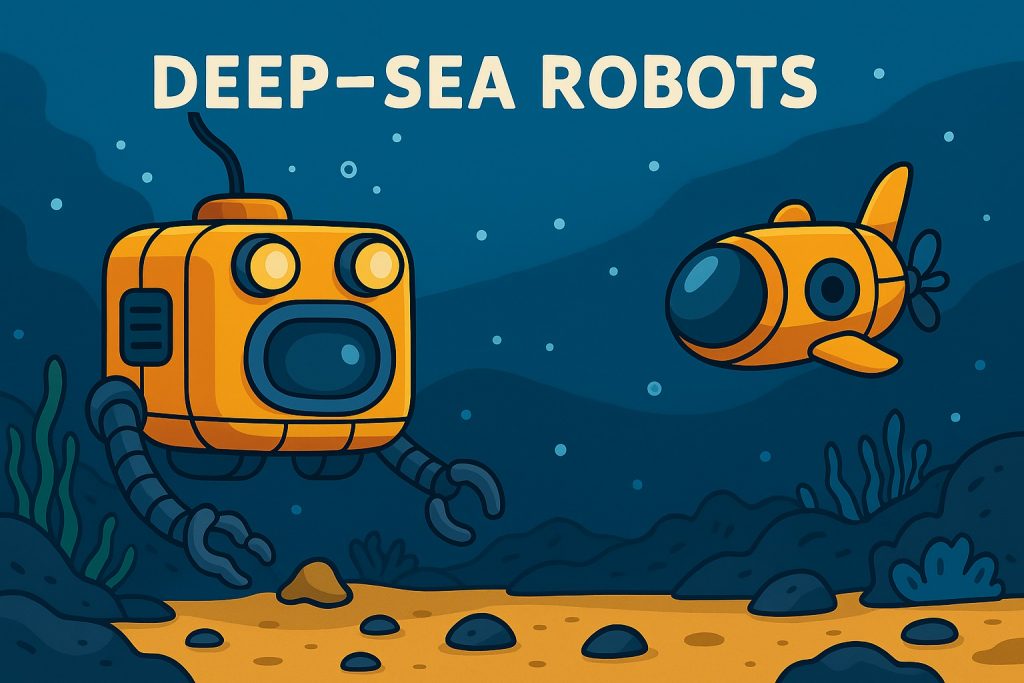The ocean covers over 70% of Earth’s surface, yet more than 80% of its depths remain unexplored. Extreme conditions such as crushing pressure, near-freezing temperatures, and complete darkness make human exploration nearly impossible. That’s where deep-sea robots come in. These sophisticated machines are designed to withstand the harshest underwater environments, enabling scientists to study areas of the seafloor that were previously inaccessible.
Deep-sea robots are either tethered (ROVs — remotely operated vehicles) or autonomous (AUVs — autonomous underwater vehicles). Both types are equipped with sensors, cameras, robotic arms, and scientific instruments to collect samples, map the ocean floor, and even document deep-sea ecosystems. These machines are vital to modern marine research and discovery.
Scientific Discoveries on the Ocean Floor
Thanks to deep-sea robots, scientists have made remarkable discoveries, including hydrothermal vents, methane seeps, and entirely new species of marine life. Some of these ecosystems exist without sunlight, relying instead on chemosynthesis — a process where bacteria convert chemicals from the Earth’s crust into energy. These findings have challenged our understanding of life and its adaptability.
Robots have also been crucial in identifying underwater volcanoes, earthquake fault lines, and vast mineral deposits. Understanding these features helps researchers predict natural disasters and assess the potential for resource extraction, though such efforts raise environmental concerns.
Technology That Enables Deep Exploration
To function at great depths, deep-sea robots must be built with materials that resist corrosion and withstand immense pressure. Titanium, carbon composites, and synthetic foams are commonly used. They rely on sonar for navigation and communication, since radio waves do not travel well underwater. Power is supplied by advanced batteries or through cables connected to surface ships.
Some newer models use artificial intelligence to make independent decisions, such as adjusting their course to follow interesting terrain or avoiding obstacles. As technology improves, the capabilities of deep-sea robots continue to expand, opening doors to even deeper and more detailed exploration.
Applications Beyond Research
While scientific exploration is the primary goal, deep-sea robots also serve in industries such as oil and gas, underwater construction, and search-and-rescue missions. They have played roles in inspecting undersea pipelines, repairing cables, and even locating shipwrecks and black boxes from airplane crashes. In military applications, these robots are used for mine detection and surveillance.
The insights gathered by these machines not only advance science but also have practical implications for safety, commerce, and environmental protection.
The Future of Ocean Floor Exploration
As robotics, AI, and materials science progress, the future of deep-sea exploration looks promising. Next-generation robots will be faster, more energy-efficient, and capable of longer missions with less human oversight. They may help unlock answers to some of Earth’s biggest mysteries — from the origins of life to the effects of climate change on ocean ecosystems.
Moreover, as international interest in seabed mining grows, robots will likely play a central role in monitoring and regulating environmental impact. The challenge will be balancing discovery and protection of these fragile underwater worlds.
Glossary
- ROV (Remotely Operated Vehicle) – A tethered underwater robot controlled by operators on a surface vessel.
- AUV (Autonomous Underwater Vehicle) – A free-swimming robot that operates independently of human control.
- Hydrothermal vent – An opening in the seafloor that releases heated, mineral-rich water.
- Chemosynthesis – The biological process where certain organisms derive energy from chemical reactions rather than sunlight.
- Sonar – A navigation system that uses sound waves to detect objects underwater.


